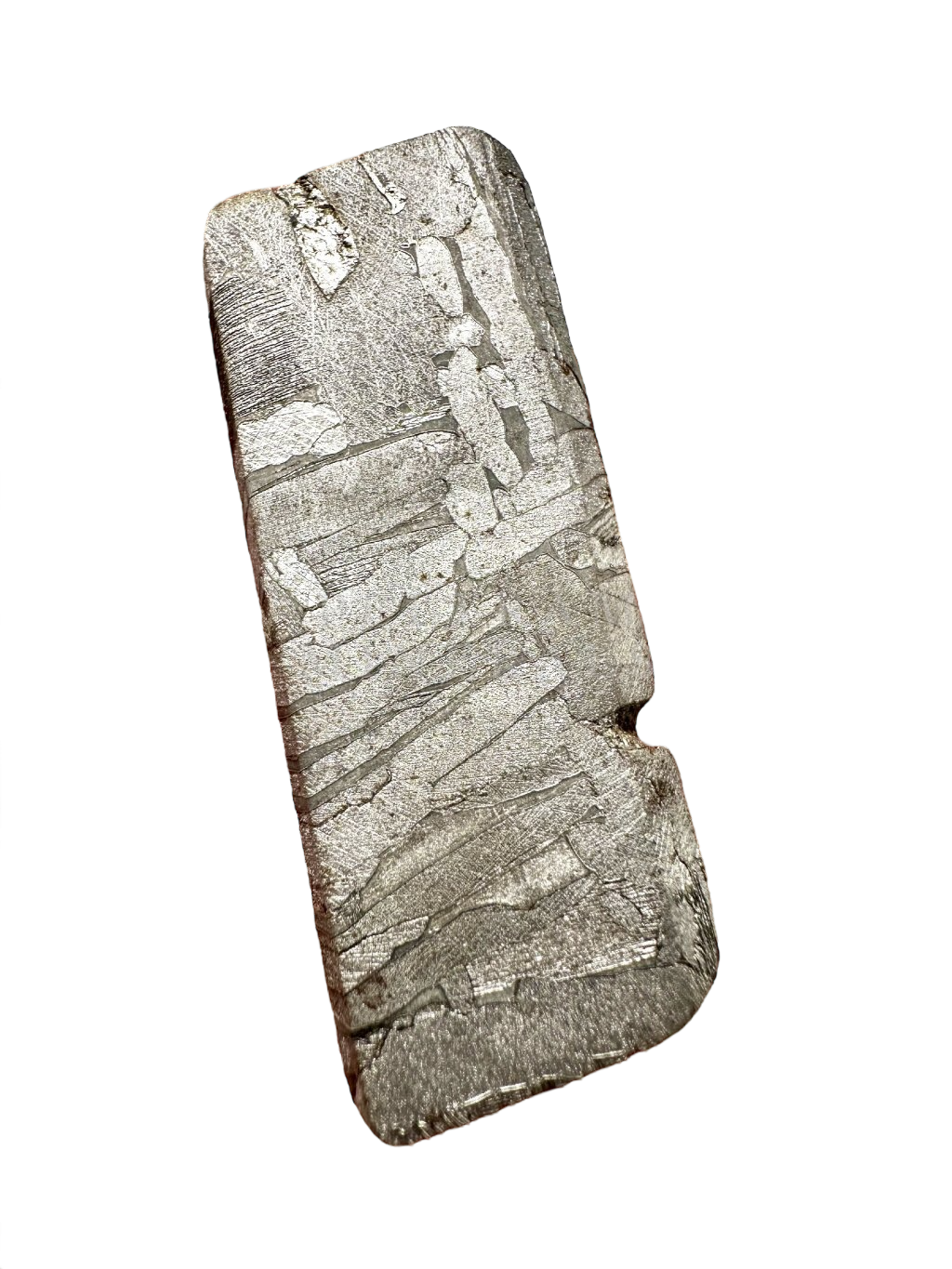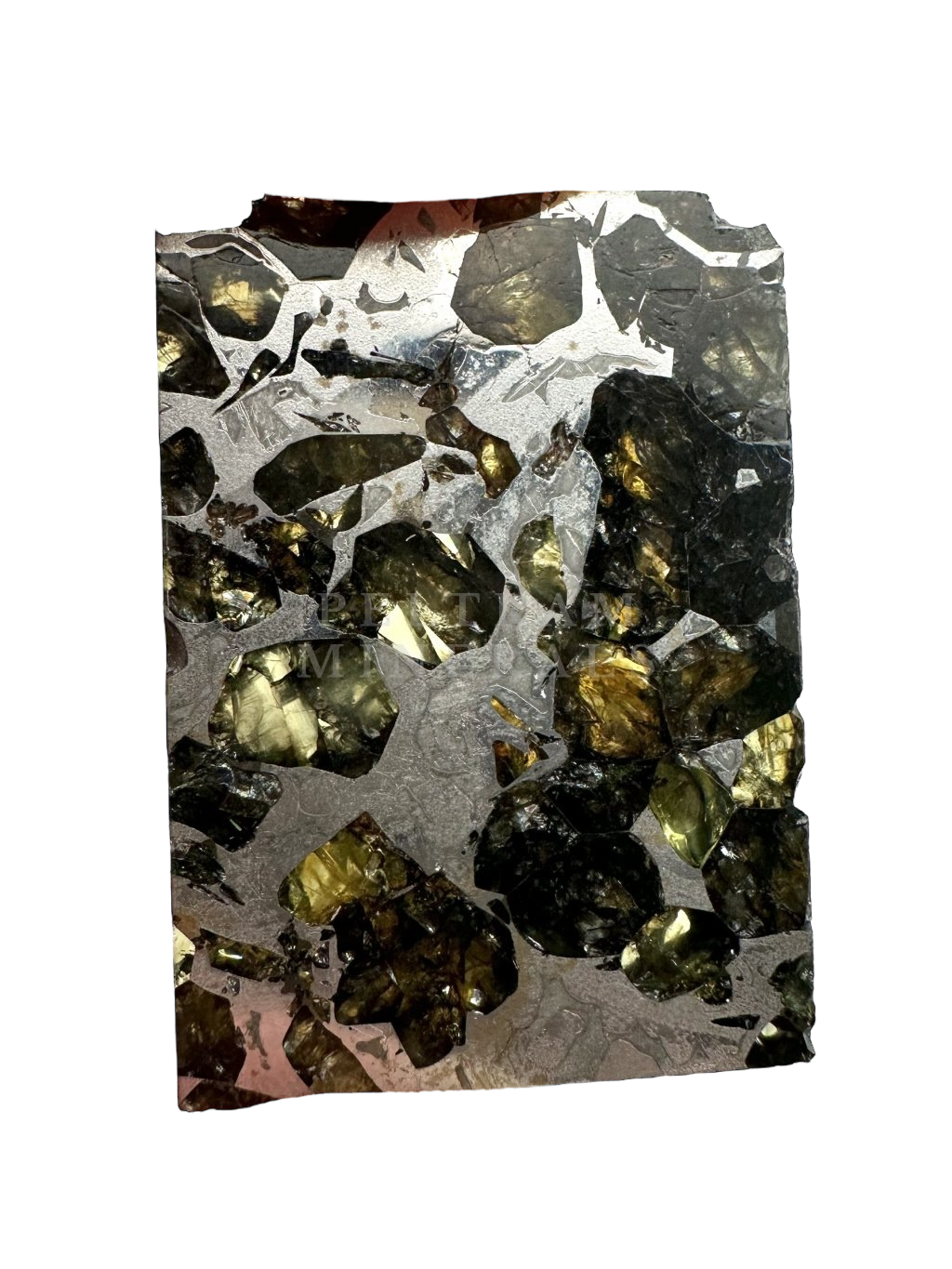Meteorite Seymchan 17,8g / endcut – Magadan, Russia
Type: Pallasite
Locality: Magadan, Russia
Weight: 17,8g
Dimensions: 38 x 27 x 10 mm
Year found: 1967
Total known weight: 323,3 kg
Surface treatment: endcut
Note: This pallasite is prone to oxidation (rusting), especially in humid conditions
| Category: | Seymchan |
|---|---|
| By name: | Seymchan |
| ? Type: | Stony-iron |
| ? Surface treatment: | Cut |
| Packaging: | None |
| Specialties: | Widmanstätten's patterns |
Seymchan – unique pallasite from Russia
The Seymchan meteorite fell in the Magadan region near the settlement of Seymchan in Russia, though the exact fall date remains unknown. It was discovered in 1967, with a 272 kg mass found in June and another 51 kg mass in October. Initially, only metallic parts were discovered, classifying it as an iron meteorite of type IIE. Only in 2004 was it determined that 20% of the samples contained olivine crystals, leading to its classification as a pallasite.Internal structure
Seymchan has an unusual internal structure. Some parts are rich in olivine inclusions (pallasitic sections), while others consist almost entirely of iron–nickel alloys, mainly kamacite and taenite. In the metallic sections, characteristic Widmanstätten patterns can be revealed after polishing and acid etching. It also contains minerals such as troilite, schreibersite, and chromite.Purely metallic section composed of kamacite and taenite
Pallasitic section with olivine inclusions









